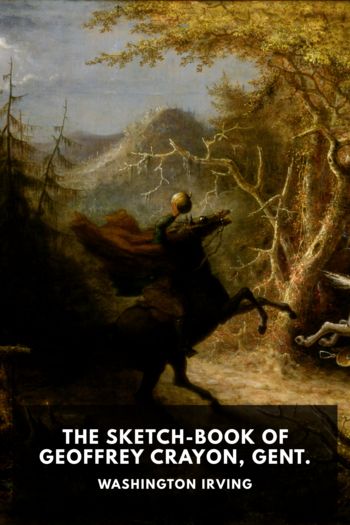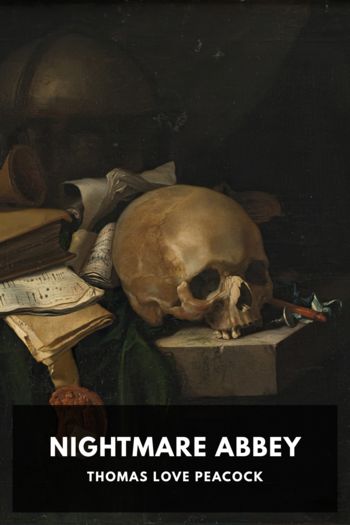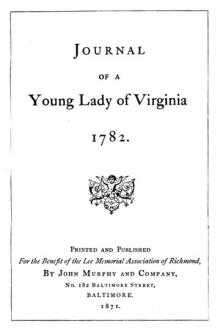The Sketch-Book of Geoffrey Crayon, Gent., Washington Irving [best manga ereader .txt] 📗

- Author: Washington Irving
Book online «The Sketch-Book of Geoffrey Crayon, Gent., Washington Irving [best manga ereader .txt] 📗». Author Washington Irving
John Hallum, the little collector of curiosities whom I had made the arch magician, had been for six years a resident of the place, and had decorated this final nestling-place of his old age with relics and rarities picked up in the course of his life. According to his own account, he had been somewhat of a traveller, having been once in France, and very near making a visit to Holland. He regretted not having visited the latter country, “as then he might have said he had been there.” He was evidently a traveller of the simple kind.
He was aristocratical too in his notions, keeping aloof, as I found, from the ordinary run of pensioners. His chief associates were a blind man who spoke Latin and Greek, of both which languages Hallum was profoundly ignorant, and a broken-down gentleman who had run through a fortune of forty thousand pounds left him by his father, and ten thousand pounds, the marriage portion of his wife. Little Hallum seemed to consider it an indubitable sign of gentle blood as well as of lofty spirit to be able to squander such enormous sums.
P.S.—The picturesque remnant of old times into which I have thus beguiled the reader is what is called the Charter House, originally the Chartreuse. It was founded in 1611, on the remains of an ancient convent, by Sir Thomas Sutton, being one of those noble charities set on foot by individual munificence, and kept up with the quaintness and sanctity of ancient times amidst the modern changes and innovations of London. Here eighty broken-down men, who have seen better days, are provided in their old age with food, clothing, fuel, and a yearly allowance for private expenses. They dine together, as did the monks of old, in the hall which had been the refectory of the original convent. Attached to the establishment is a school for forty-four boys.
Stow, whose work I have consulted on the subject, speaking of the obligations of the gray-headed pensioners, says, “They are not to intermeddle with any business touching the affairs of the hospital, but to attend only to the service of God, and take thankfully what is provided for them, without muttering, murmuring, or grudging. None to wear weapon, long hair, colored boots, spurs, or colored shoes, feathers in their hats, or any ruffian-like or unseemly apparel, but such as becomes hospital-men to wear.” “And in truth,” adds Stow, “happy are they that are so taken from the cares and sorrows of the world, and fixed in so good a place as these old men are; having nothing to care for but the good of their souls, to serve God, and to live in brotherly love.”
For the amusement of such as have been interested by the preceding sketch, taken down from my own observation, and who may wish to know a little more about the mysteries of London, I subjoin a modicum of local history put into my hands by an odd-looking old gentleman, in a small brown wig and a snuff-colored coat, with whom I became acquainted shortly after my visit to the Charter House. I confess I was a little dubious at first whether it was not one of those apocryphal tales often passed off upon inquiring travellers like myself, and which have brought our general character for veracity into such unmerited reproach. On making proper inquiries, however, I have received the most satisfactory assurances of the author’s probity, and indeed have been told that he is actually engaged in a full and particular account of the very interesting region in which he resides, of which the following may be considered merely as a foretaste.
Little BritainWhat I write is most true … I have a whole booke of cases lying by me, which if I should sette foorth, some grave auntients (within the hearing of Bow Bell) would be out of charity with me.
NasheIn the centre of the great city of London lies a small neighborhood, consisting of a cluster of narrow streets and courts, of very venerable and debilitated houses, which goes by the name of Little Britain. Christ Church School and St. Bartholomew’s Hospital bound it on the west; Smithfield and Long Lane on the north; Aldersgate Street, like an arm of the sea, divides it from the eastern part of the city; whilst the yawning gulf of Bull-and-Mouth Street separates it from Butcher Lane and the regions of Newgate. Over this little territory, thus bounded and designated, the great dome of St. Paul’s, swelling above the intervening houses of Paternoster Row, Amen Corner, and Ave-Maria Lane, looks down with an air of motherly protection.
This quarter derives its appellation from having been, in ancient times, the residence of the Dukes of Brittany. As London increased, however, rank and fashion rolled off to the west, and trade, creeping on at their heels, took possession of their deserted abodes. For some time Little Britain became the great mart of learning, and was peopled by the busy and prolific race of booksellers: these also gradually deserted it, and, emigrating beyond the great strait of Newgate Street, settled down in Paternoster Row and St. Paul’s Churchyard, where they continue to increase and multiply even at the present day.
But, though thus fallen into decline, Little Britain still bears traces of its former splendor. There are several houses ready to tumble down, the fronts of which are magnificently enriched with old oaken carvings of hideous faces, unknown birds, beasts, and fishes, and fruits and flowers which it would perplex a naturalist to classify. There are also, in Aldersgate Street, certain remains of what were once spacious and lordly family mansions, but which have in latter days been subdivided into several





Comments (0)